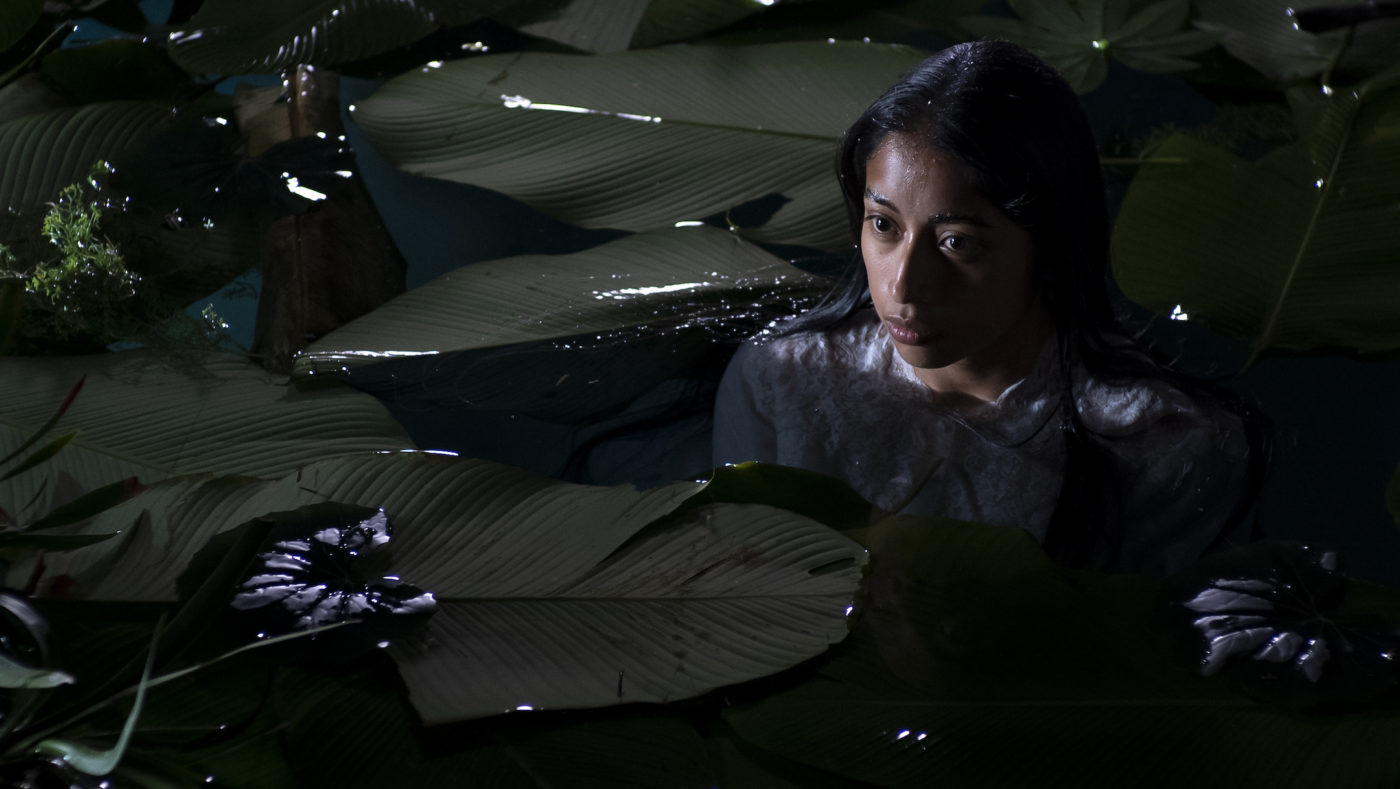By Alejandro A. Riera
Horror takes many forms in director-writer Jayro Bustamante’s eerie, chilling and masterful third feature, La Llorona. It comes in the form of the demeaning language used against Guatemala’s indigenous women by the wife of a former dictator on trial for the government-sponsored genocide of thousands of Ixil Mayans in the early 80s. It comes in the form of a testimony at that very same trial by one of the survivors of this genocide as she, her head covered in a veil, describes the night the Army invaded her village, burning, killing and raping whatever was in their way, It also comes in the form of water and wind and in the mournful cry that haunts the general at night. Co-written by Lisandro Sánchez, La Llorona, like the mythical tale that inspires it, is a ghost story about loss and pain and, like the best horror stories, about the evil men and women are capable of through actions and words. Like Issa López’s Tigers Are Not Afraid before it, characters are forced into a reckoning for the violence they inflicted on others: the drug cartels in López’s film and the military junta in Bustamante’s. La Llorona’s women-centric world also recalls Mati Diop’s equally mournful and moving Atlantics, where the ghosts of the Senegalese men who drowned in the ocean in search of a better life in Europe take over their wives’, lovers’ and even mothers’ bodies to seek revenge on those who exploited them.
The general in this story is Enrique Monteverde (Julio Díaz), a clear stand-in for Guatemalan dictator Efrain Rios-Montt, a strongman in the early stages of Alzheimer’s who lives in a household ruled by women: his wife Carmen (a sublime Margarita Kenéfic), daughter Natalia (Sabrina de la Hoz, who worked with Bustamante in his second feature Tremors), granddaughter Sara (Ayla-Elea Hurtado), and Valeriana, head of the housekeeping staff (María Telón, from Bustamante’s debut feature Ixcanul). Letona, Monteverde’s bodyguard (Juan Pablo Olyslager, also from Tremors), may be there to keep them safe but he’s pushed to the margins both metaphorically and, towards the end, quite literally. A guilty verdict sends Monteverde to the hospital but his allies in the Constitutional Court acquit him of all charges. They are welcomed by protesters at the fortress-like mansion, their hands banging on the ambulance carrying Enrique and his family as it weaves its way towards the entrance, Bustamante shooting all the action from inside the ambulance, the camera pulling back as the ambulance doors open, following the family towards the house as it fights the crowds. The state of siege has begun for them. More bad news waits for them once they are inside: the entire staff has resigned en masse, financial consequences be damned, as a result of the trial and the general accidentally shooting his wife a couple of nights ago after hearing a woman cry.
Enter Alma (María Mercedes Coroy, also from Ixcanul), the new maid, whose long dark hair and penetrating, and sometimes unnerving, stare resembles an apparition from Ringu or The Grudge. Not only do the protestors ratchet up the volume day and night but strange happenings now begin to haunt the family: nightmares, visions, frogs, water everywhere, Carmen struck by conjunctivitis, and that piercing devastating cry that only Enrique can hear. Alma befriends Sara, Natalia begins to ask the wrong questions about his father’s actions (including his possible role in her husband’s disappearance) and Carmen begins to suspect that her ailing husband may have other intentions towards the new maid.
Like Issa López and Mati Diop, Bustamante is not interested in playing gotcha with his audience. He prefers to set a mood, one that is claustrophobic and uneasy, where the elements play an essential role and where the protestors’ chants and the photos of the disappeared they throw over the mansion’s fences are as ghostlike and terrifying as any ectoplasmic manifestation. And like in any good horror movie, Bustamante, alongside sound designer Carlos Cáceres and composer Pascual Reyes, creates a disquieting soundscape with its whispers, echoes, electric hums and howls and the simple sound of water flowing. La Llorona, as well as Tigers Are Not Afraid and Atlantics, needs to be played at full volume and in the dark. Nicolás Wong Díaz’s camerawork adds to the film’s claustrophobia, with its leisurely, stately-paced, almost Kubrickian zooms in and out of scenes and characters, opening this women’s world and perspective to then trap them back in it; or, in the case of that court testimony, where the camera pulls back from that veiled woman to show more than a dozen more, sitting in that courtroom, to go from the personal to the collective, from one individual’s memory to an entire country’s. When Wong breaks away from such stately moves, as in that ambulance scene with its long Steadicam shot, the impact can be shocking.
Much like César Díaz’s Our Mothers early this year, the women here either carry the burden of history as both victims and witnesses in the case of Alma, Valeriana and the women in the trial. But they are also deluded defenders of a violent status quo like Carmen (and quite possibly many more of Guatemala’s bourgeoisie), are beginning to wake up like Natalia or, in the case of Sara, they are the uncertain future of a country that is still coming to terms with its recent past. La Llorona is a testament full of indelible images and moments from an astute and rigorous filmmaker who is singlehandedly putting Guatemala in the world’s filmmaking map. It is also a spine-chilling ghost story.
La Llorona is streaming in Shudder.

